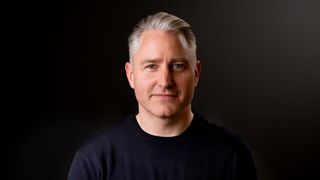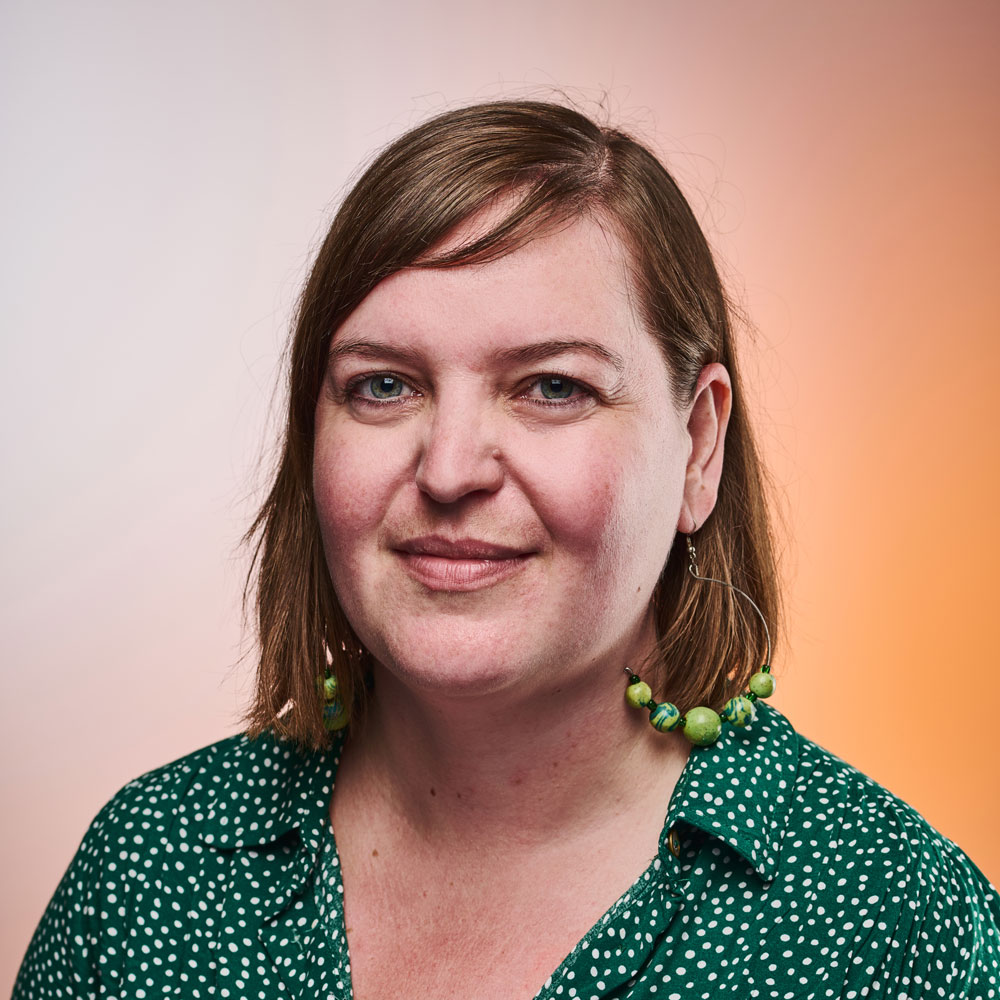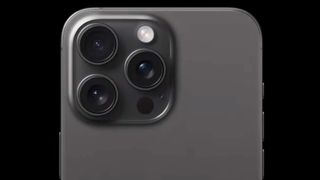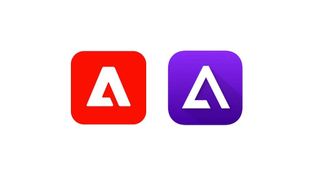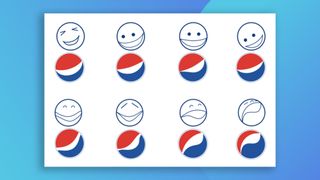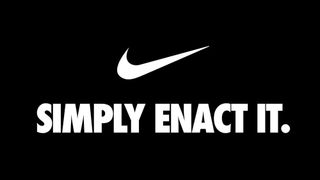Guy Cornet is creative director/partner at Free Partners, a London-based creative agency. In terms of what that means for his day-to-day – from brand and advertising concepts, to the design of websites, to the footer on Word templates, nothing goes out the door without his stamp of approval.
With 18 years working in a number of global branding and advertising agencies within the UK and the Middle East, Guy sees the big picture when creating brands. I caught up with him recently as part of our Day in the life series to chat about how he overcame his fear of public speaking, how dyslexia has made him who he is today and how he employs his signature Brand Anatomy to clients.
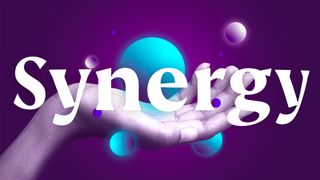
Tell me about a typical day in your role
My days differ all the time, but I always wake up in the same house, which is nice. I work mostly at home, or in our London studio. Either way, it involves collaborating with colleagues, clients or both. I’m a hands-on creative director and wouldn’t have it any other way. I work on specific client projects, but also direct a team of creatives to help them fulfil their goals and project success either individually or as a team. It’s a real delight.
I love the variety in my day. I find it extremely fulfilling having conversations with junior creatives, building their confidence and giving them insight, and then minutes later I’m being onboarded by the Clients Team, chatting through briefs with the Strategy Department, or presenting creative work to our newest client. Also, being in London, our amazing Georgian studio can get warm with all the bodies and the chatting, so you might find me fetching ice creams for the team from our local shop. Either way whatever I do I try and bring joy to people and the creative process as much as I can.
I found since Covid we’ve had an amazing chance to re-discover what ‘work’ means with the balance between work life and home life becoming blurred. We get to spend more time with our family, and our home life has flourished, but as result I feel we’ve lost a lot of the collaboration and learnings (especially for juniors) that we used to take for granted pre-Covid. So, we’re now going back to three days in the studio spread across the week so we can still do our family thing and get our head space, but we can help our team learn in the studio, listen to conversations and problem-solve with the senior members. This helps develop our culture of learning partnerships, which in turn helps our clients and creative output.
What was your early career like?
My father used to call me ‘the chief colour-in-er’ of the family, and considering his father (Grandad Jimmy) was a great oil painter and character artist who had the fortune to be exhibited in galleries as well as the world renowned weekly Coventry RFC match programme, I took that as a positive and set my sights on a career that allowed me to pursue a living as a commercial artist.
To be honest, I left university more confused than when I went in. But my hunger for a creative outlet moved me into freelancing at an early stage. The classic ‘you can’t get a job without experience’ line came up, but as you know you can’t get experience without a job. FML.
One job led to another and I found myself in a branding agency full-time in Teddington. There I learnt the dark arts of print design from an established Polish creative director who had a keen eye for detail and was heavily influenced by Swiss design. And so my ‘overworked flourishes’ or ‘design nonsense’ was shot down and replaced with an understanding of typographical hierarchies, grid systems and layout effectiveness, as well as learning some Polish expletives along the way.
Under their guidance, I quickly understood why we design things. Functional touchpoints need to make the viewer feel relaxed and calm. If it’s cluttered or awkward in hierarchy they just won’t bother engaging. Why should they care? Why should they give you time?
From then on, I had the tools. I moved to a London marketing agency and then onto the Middle East, working for larger branding and advertising agencies across FMCG and household brands. But London would soon call me home.

Which project are you most proud of?
All the work that you’ve produced or have worked on should be your best, and something you’re proud of, but that’s a very boring answer!
I feel the work I’m doing now at Free is different to much of my career because I am fully invested in the development of our team and offering, and I get immense pride from seeing the team show off their work. The pride they show means it’s being done right, and the client feels that. They feel the joy of what excellent looks like, and they in turn are proud to show it to their peers and customers. That for me is real pride; the pride of others.
But moving away from the team at Free to jobs that I owned solely is a brand that allowed me to have complete creative freedom…PYPR.
PYPR was a mood enhancement drink that harnessed the active ingredients of the Kava plant (a tribal drink from the Pacific Islands). The ingredients cause relaxation and stimulates conversation, and a clever friend from New Zealand managed to extract it and put it into a carbonated fruit drink.
I was brought in as the creative partner and we launched it to the Dubai and Ibiza markets. I was given the exciting (but daunting) task of come up with all the creatives – delivering the identity, packaging, POS, advertisements, digital experience and events.
This gave me my first taste of budgeting, something I’d never thought too much about at other agencies. The art of trying to find the best way to get the most out of the creative process whilst managing the marketing spend.
Despite many late nights and all the pressure around the launch, it was the best experience I could have asked for. And seeing the product on shelves gave me a sense of pride and accomplishment. That’s what I love about what I do. You find yourself immersed in different cultures, communicating to different audiences through different products. It’s a real honour, and I find myself growing as a person with each brief I get.
How do you approach a brief when you get it?
It might sound obvious, but I listen. Normally you have the client, the customer, the accounts, the creatives, brand and strategy who all have things to say about why it is the way it is and what it could mean. So, to start, just listen. This will quickly allow you to understand what the problems are, and how you need to solve them. All you need to do is join the dots.
As problem-solvers you need to be a good listener first. Then you can use your knowledge to communicate effectively. Form follows function and all that good stuff.

What's the Brand Anatomy and how do you use it as a springboard?
The Brand Anatomy is Big Brain!
It’s something all agencies should have, but some just bother with. It’s a deep dive process for a client that allows them to understand their brand in more depth. It breathes life and meaning into their company, and elevates it away from same-shame and gives it an ownable DNA. It’s a way of defining and articulating what makes a business unique, because every business is. It encompasses their back story, character, belief, values, vision and mission. It helps their people understand the business they're representing and guides their behaviours. It distinguishes them from their competitors and, together with their value proposition, makes them relevant for their particular audience. And it forms the brief for the brand's visual identity.
So, once we have it, the creatives use it for the power of good, creating a sounding board for all output and future touchpoints. We develop TOV, colours, iconography, photography, semiotics. All brand assets are influenced for that one truth. The Brand Anatomy.
Tell me about a tricky work-related challenge and how you approached it
Apart from working out what to have for my lunch, I think public speaking is something that I used to find a real challenge. But thanks to the PYPR experience it’s made me a more confident person as a result and now I really enjoy the process. Being pushed out of your comfort zone has only positive effects; studies show these types of new experiences rewire your brain and make it more adaptable, stronger, and healthier. And that’s science people!
I remember we were due to give a talk to 300-400 people about the importance of brand and the night the before I was really struggling with the idea of standing up on stage. Delivering something meaningful and effective to the audience, you can really get imposter syndrome.
Having dyslexia doesn’t help as well. I used to struggle a lot with structuring conversations around subjects I was passionate about. I had a specific point I wanted to make in my mind, but to find the words to articulate that to someone else was a struggle. I used to float around the point and then have other narratives in my head that would interfere, telling me to use a better word or suggesting alternative ways to get the point across that I wanted to make. When this happened, it would make me unsure of the original point I was trying to make. Cool! That fear of a fumble can still raise its ugly head today, so try to imagine how it felt to stand, not just in front of one person, but hundreds.
A colleague of mine was there the night before I was due to deliver my talk and I spoke to him about how nervous I was and how I thought the nerves were getting the better of me. He gave me this advice; “Fear is exactly the same energy as being exhilarated. It’s all about how you channel it. Turn that negative energy into a positive one and you will thrive.”
And that’s what I did. It was the best talk I delivered to date. So, if you find yourself in that situation just give yourself a break and channel the positive energy.

How does your dyslexia affect your work?
It’s been instrumental in my career. I wasn’t diagnosed with dyslexia until I was about fifteen, so up until then I developed tactics and coping mechanisms for social environments. Schools especially weren’t ready to understand that children might have different needs or need their school work delivered slightly differently to help them to understand.
So, I left school at sixteen with one GCSE: Art (surprise surprise). I couldn’t grasp historic dates or learn long passages of text. I remember reading a chapter of Great Expectations four times and even then it didn’t stick. Things would take me four or five times the length it would for others, and the lack of support from teachers meant I rebelled. Luckily my parents knew a tutor so I re-sat my GCSEs and passed everything.
However, it was my dyslexia that made who I am today. This is how my life has developed because of my dyslexia and I’m writing it as ‘an ode to my early teachers’ in the best way I know how. In the style they knew best. Like lines in a detention. ;0)
It made me listen
It made me relate
It made me hungry
It made me fair
It made me think
It made me understand people
It made me passionate
It made me have doctors handwriting
It made me a creative
So, thank you.
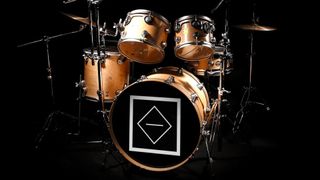
How do you think neurodivergent people can thrive in the creative industries?
Your neurodivergence is a skill. It allows you to see things other can’t. You’ve learnt coping mechanisms and unique ways of communicating and interpret the world around you differently. This means you can leverage your strengths. It could be attention to detail, pattern recognition, intense focus, amongst many others. These are highly valuable in creative work environment. Identifying and capitalising on these strengths will help you succeed and stand out above the rest.
How inclusive is the creative and design industry in 2024?
I think extremely. A lot of neurodivergent individuals have found solace in the creative space. This is a place that has been built for people who think differently. And the industry needs fresh outlooks to stay ahead of the curve.
Being dyslexic, I found it extremely stressful working in a world that wasn’t built for someone with my ‘disability’, and I found my way through the help of art and design. The creative industry is a salvation for people like me.
The next generation of creatives coming in with a wider knowledge of mental health and a deeper acceptance of diversity can only accelerate this space, and influence the next generation of consumers in an effective and positive way. As we harness new techniques and develop new communication platforms through the unique outlook of neurodivergent leaders and business owners, we can hope to see a whole new chapter of creativity. Very exciting.
Who's your dream client?
As you’ve hopefully gathered, I like working in partnership with people. This is a human-to-human process. From us to client and client to customer it’s all people-focused. My dream client is one that’s honest. Being honest with us makes sure we can deliver their brand truthfully to their audience. And, as we know, people favour brands if they can trust them and, in turn, build loyalty.
It also makes for better client relationships as the conversations you have naturally in a partnership stimulates insights and business understanding. Meaning we can take steps together and make long term positive change from the inside.
What career advice would you give your younger self?
“A prudent question is one-half of wisdom.”
- Francis Bacon
The other half is a good laugh at the answer.
Don’t be afraid to ask more questions.
Find out more about Free Partners.
Get the Creative Bloq Newsletter
Daily design news, reviews, how-tos and more, as picked by the editors.
